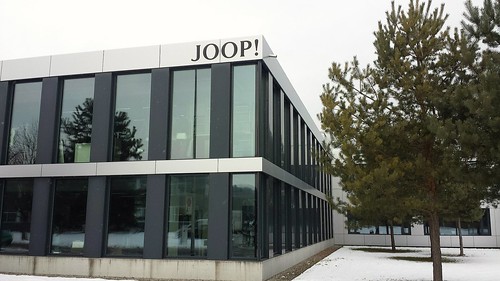More, actively dividing cells with higher levels of Notch signaling have been proven to retain their undifferentiated myogenic progenitor identification [seventeen]. Reduced Notch signaling was also related with muscle hypotrophy and loss of regeneration prospective [29]. Hence Notch signaling is hypothesized to be integral for keeping the satellite mobile specialized niche and myogenic progenitor cells. Notch and Wnt signaling are temporally coordinated to make sure suitable differentiation, as these pathways market proliferation and differentiation, respectively. A change from Notch to Wnt signaling is essential during adult myogenesis [30]. Wnts and their downstream effector, b-catenin, market development from satellite cells to myotubes [31]. Nonetheless, too much Wnt signaling for the duration of growing older ceases to be pro-myogenic and rather prospects to enhanced muscular fibrosis [31], demonstrating that inappropriate Wnt signaling for the duration of myogenesis is extremely disruptive. In Wnt3a treated myoblasts, large stages of activated b-catenin are connected with differentiating but not proliferating cells [thirty]. Wnt3a has also been shown to promote myoblast fusion, an important phase in myotube development and muscle mass regeneration [32]. Frizzled7 and its connected ligand Wnt7a have been also proven to promote skeletal muscle regeneration by supporting the symmetric division of satellite cells, thus growing the pool of cells available for differentiation [33]. Curiously, emerin was demonstrated to interact with bcatenin and avoid its accumulation in the nucleus [34], suggesting that emerin regulates Wnt signaling in the myogenic lineage. Therefore, we forecast emerin-null myogenic progenitors will Quercetin 3-O-rutinoside exhibit significantly perturbed Wnt signaling. The value of micro-RNAs (miRNAs), ,22 nucleotide non-coding RNAs, as regulators of varied cellular procedures which includes improvement and differentiation has grow to be obvious in latest a long time [35]. miRNAs usually act by binding mRNAs at their 39 UTR in the cytoplasm and degrading them or attenuating their rate of translation. Hence miRNAs are hypothesized to fine tune gene expression, which is essential for regulating developmental pathways [36]. Numerous myogenic miRNAs (myomiRs) have been described as getting especially essential in coronary heart and skeletal muscle mass advancement, such as miR-206 [37]. Myogenic regulatory variables Myf5 and Myogenin activate the expression of the two miR-1 and miR-206, although MyoD is capable of activating only the expression of miR-206 [38]. [39]. miR-1 and 17975010miR-206 target Pax7 and regulate its  expression [39]. Therefore the coordinated expression of miR-one and miR-206 is important for modulating the balance in between proliferation and differentiation by straight regulating Pax7 [39]. miR-486 also regulates Pax7 expression and a miR-resistant type of Pax7 brings about defective differentiation in myoblasts [forty]. miR-221 and miR-222 are downregulated upon differentiation of proliferating myoblasts, then upregulated in terminally differentiated myotubes [41]. Ectopic expression of miR-221 and miR-222 are capable of disrupting early myogenesis and terminal myotube differentiation [41]. In the course of myogenic differentiation, MyoD right boosts generation of miR-378, which boosts MyoD action by repressing the anti-myogenic protein MyoR [42]. miR-125b negatively regulates IGF-II expression, with surplus levels acting to inhibit myoblast differentiation and muscle regeneration [forty three]. miR-181 is needed for differentiation of myoblasts, with one particular of its targets getting the myoblast differentiation repressor Hox-A11 [44]. miR-24 is upregulated in the course of myoblast differentiation, and its expression is repressed by TGF-b1 in a Smad3-dependent method [45].
expression [39]. Therefore the coordinated expression of miR-one and miR-206 is important for modulating the balance in between proliferation and differentiation by straight regulating Pax7 [39]. miR-486 also regulates Pax7 expression and a miR-resistant type of Pax7 brings about defective differentiation in myoblasts [forty]. miR-221 and miR-222 are downregulated upon differentiation of proliferating myoblasts, then upregulated in terminally differentiated myotubes [41]. Ectopic expression of miR-221 and miR-222 are capable of disrupting early myogenesis and terminal myotube differentiation [41]. In the course of myogenic differentiation, MyoD right boosts generation of miR-378, which boosts MyoD action by repressing the anti-myogenic protein MyoR [42]. miR-125b negatively regulates IGF-II expression, with surplus levels acting to inhibit myoblast differentiation and muscle regeneration [forty three]. miR-181 is needed for differentiation of myoblasts, with one particular of its targets getting the myoblast differentiation repressor Hox-A11 [44]. miR-24 is upregulated in the course of myoblast differentiation, and its expression is repressed by TGF-b1 in a Smad3-dependent method [45].
